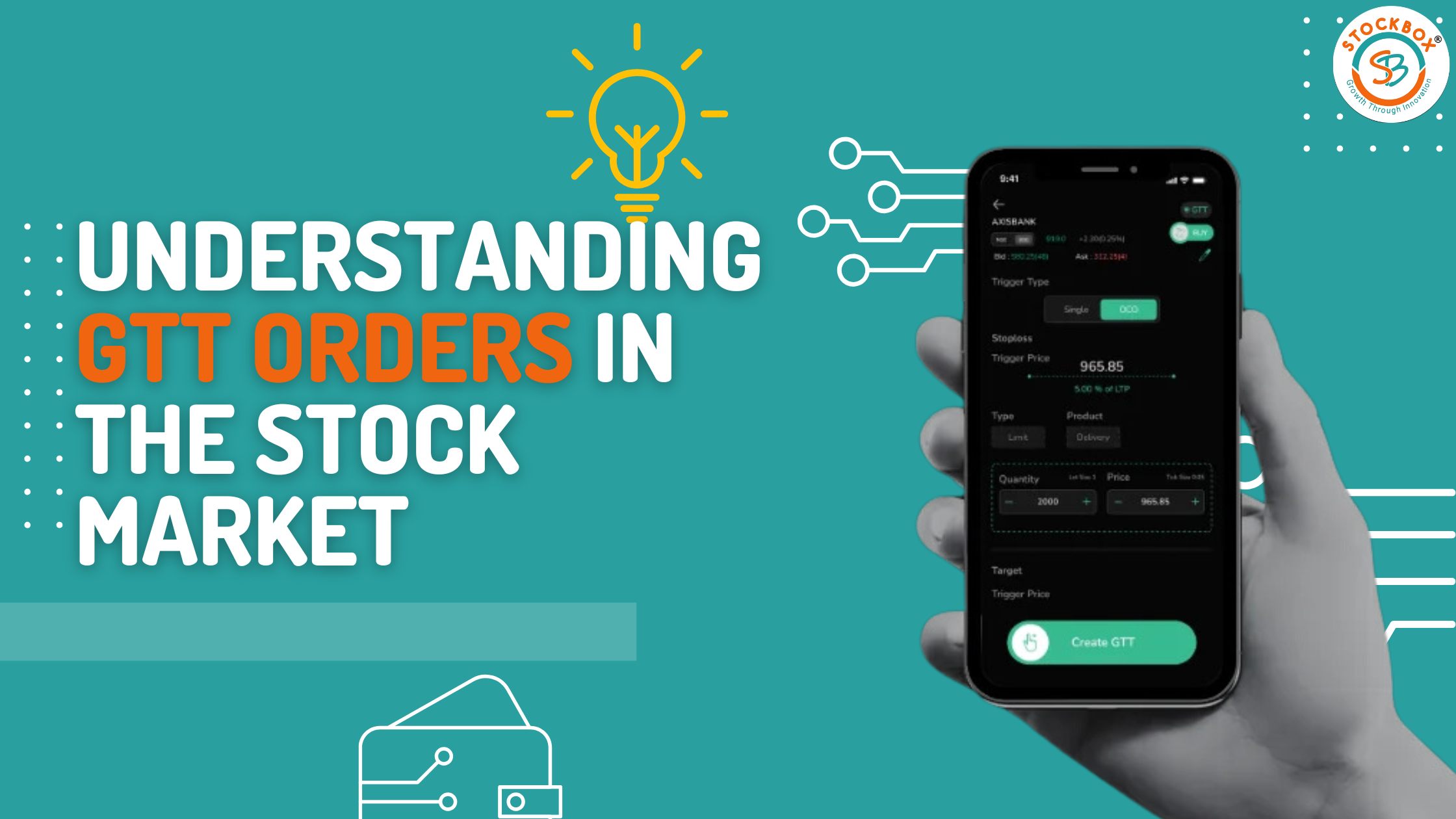In this generation, in the stock market business world, there is already a dispensation of so many useful tools making operations efficient and relaxed. One of these helpful tools is the GTT (Good Till Triggered) order that makes the work easy and short by setting some conditions under which your trade will be executed automatically.
What Is GTT Order?
It is a conditional order wherein the order remains in place, in force, and active until the special defined trigger condition for it is met. Once such condition is met for its validity, then it is commanded to send the order to the stock exchange for execution. GTT orders are stereotyped meticulously according to the usual orders that are valid for that one day’s trading—either for half a year or a year, according to the brokerage.
How Does a GTT Order Work?
The process of placing a GTT order lacks any complexity. The trader specifies a trigger price and a limit price.
- Trigger Price: This is the price at which the order will become active.
- Limit Price: This is the price at which the trade will be executed once the trigger price is reached.
If the stock price attains the trigger price set, the following takes place. The order is then sent to the Exchange. If the stock price comes to the necessary limit price, the trade is executed. If not, the order remains there till conditions create again for it to be executed.
Kinds of GTT orders
There are two scenarios for utilizing GTT orders:
- Buy GTT Orders: They are set under the current market rate. For instance, when the stock trades at Rs. 500, a buy GTT order can be placed with a trigger price of Rs. 480 and a limit rate of Rs. 475. The order can be executed only when the stock falls to Rs. 480 or below & matches Rs. 475.
- Sell GTT orders: These are priced above the prevailing market price. Suppose there is a stock selling for Rs. 500; such a GTT sell order can be placed with a trigger price of Rs. 520 and a limit price of Rs. 525. In case the stock price goes up to Rs. 520, then it will match Rs. 525.
Advantages of GTT orders
- Time-saving: No need to monitor constant stock prices.
- Automation: When the conditions are satisfied, trades are automatically executed.
- Risk management: One loss can be minimized through predetermining the exit points.
- Flexibility: The advantage of good-till-trigger orders is that they are also valid for more than some days as regular orders.
GTT order examples
Take, for example, An investor wants to buy shares of Company X, which is currently trading at Rs. 200 today, but he thinks that it is profitable to buy it around Rs. 180. Here’s where the investor can place the GTT order to buy shares at a trigger price of Rs. 180 and a limit price of Rs. 175. This means that when the stock price drops to Rs. 180, an order will be sent to the exchange, and when it matches Rs. 175, the shares will be bought.
Here’s an illustration for selling purposes: An investor bumped up Company X at Rs. 200 per share, and he wants to sell it at a higher price. He can make a sell GTT order with a trigger price of Rs. 220 and a limit price of Rs. 225. If the stock price reaches Rs. 220, the order will be sent to the exchange, and execution will happen at Rs. 225.
Conclusion
It is assumed that the strategy will be beneficial for traders who would wish to automate their trading and alleviate market risk. These orders are useful mainly for those who cannot consistently track the stock market. Simply put, the use of GTT orders enables such traders to have more control over their investments and provides an effective way for them to achieve financial objectives.

